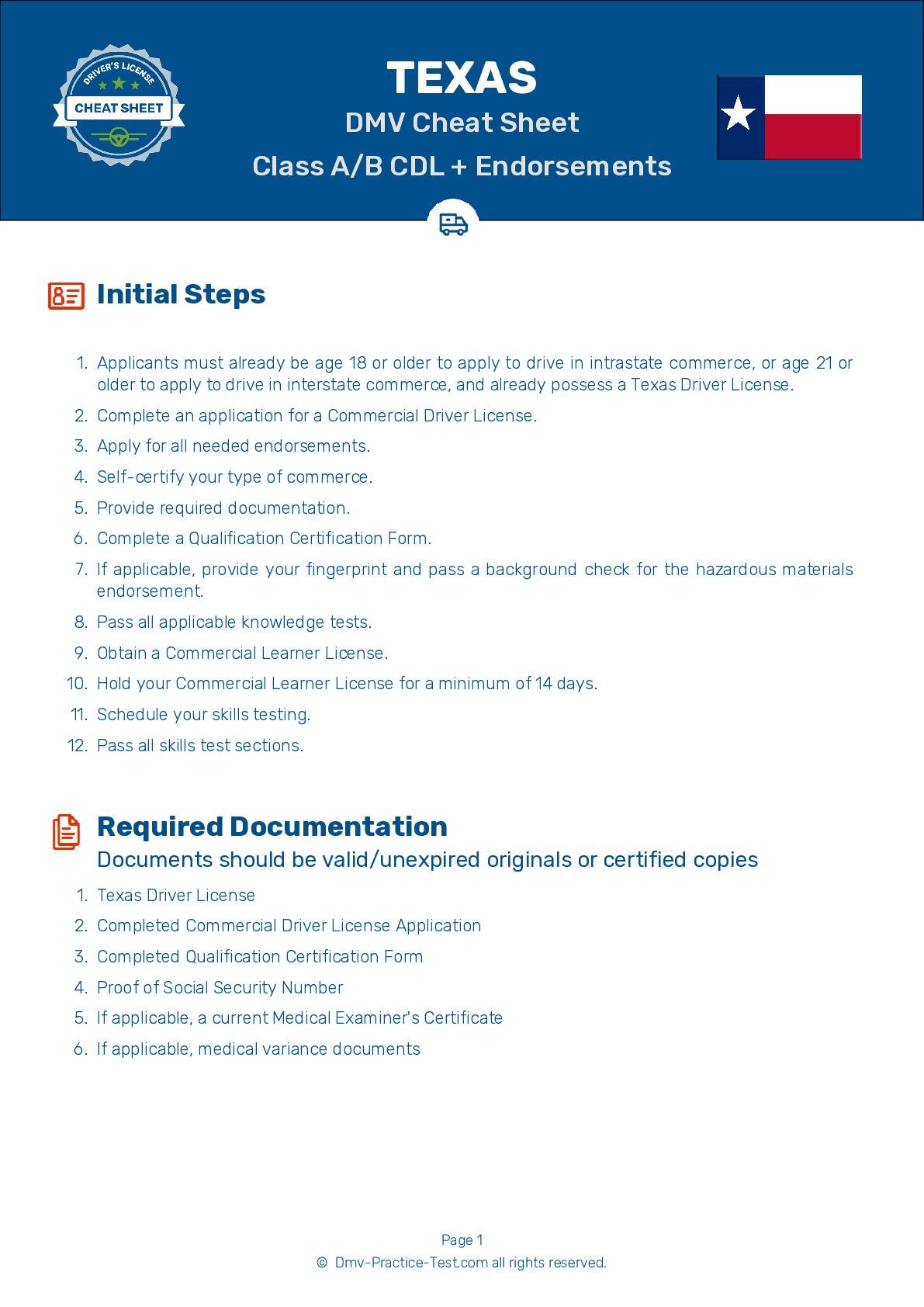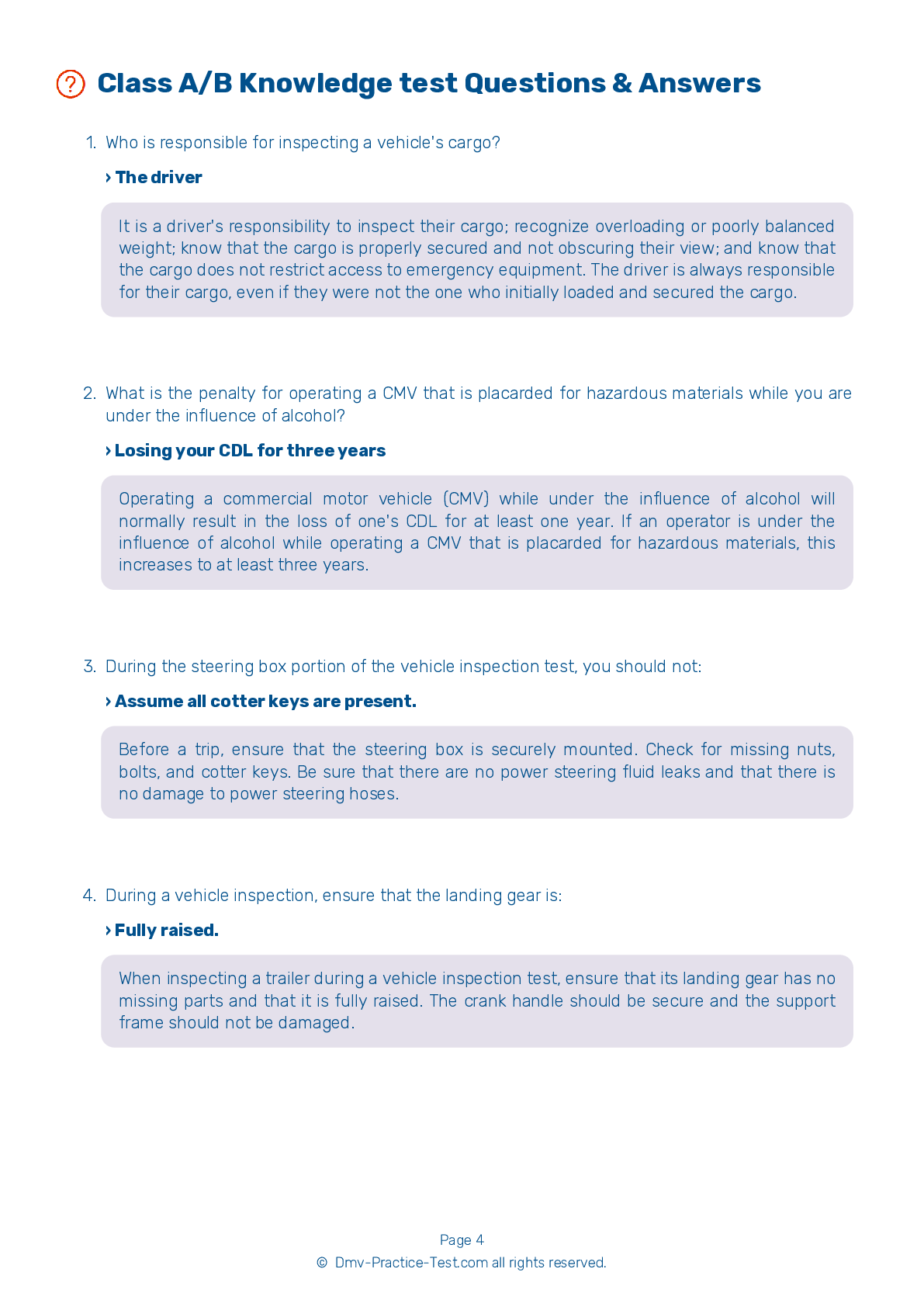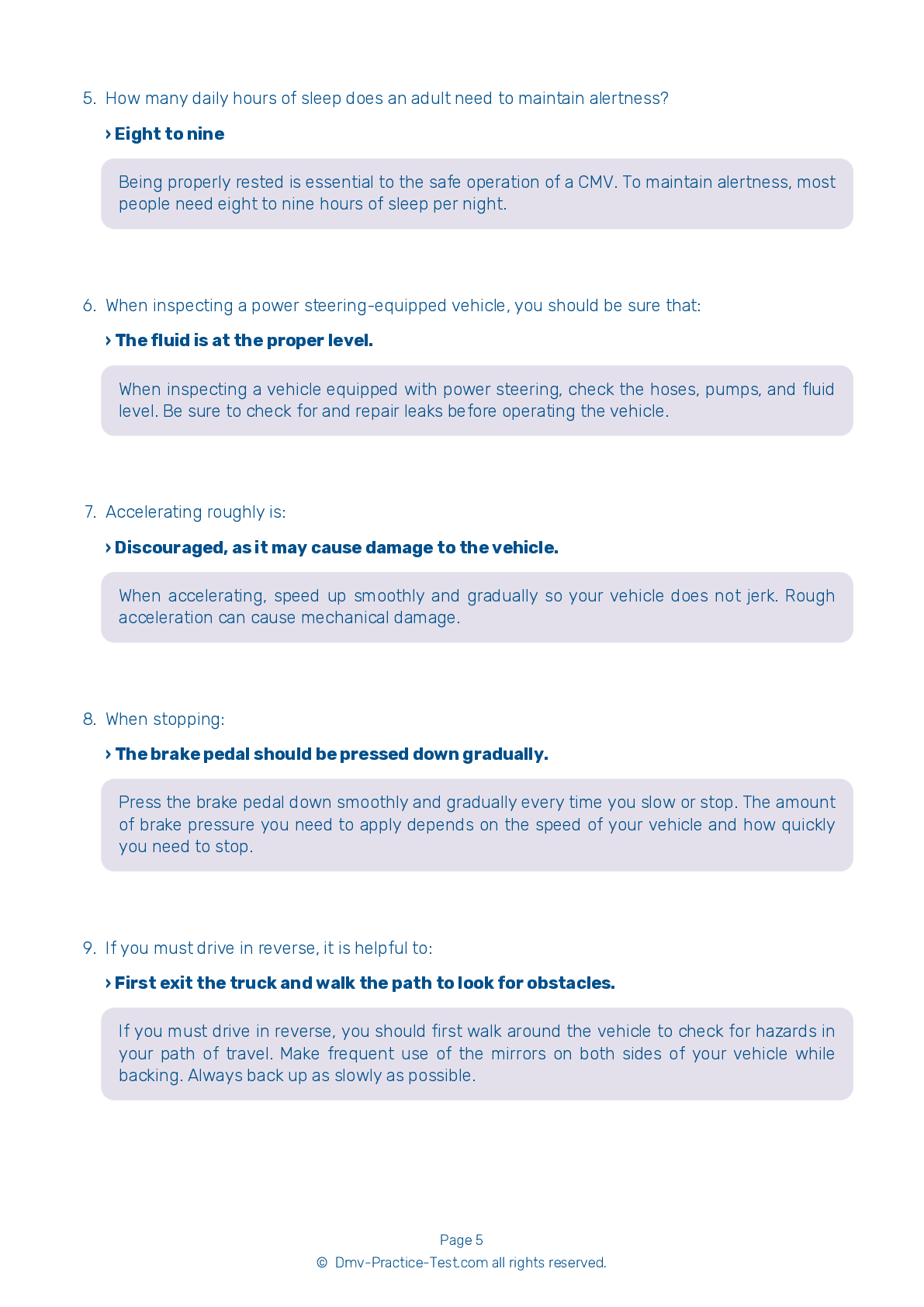Knowledge Test Class A #2
Class A Driving Test | Texas 2025 #2 Page 2 of 10
Train for FREE online with our Texas class A license test. The official exam test consists of several obligatory parts, with all of them checking your knowledge of different blocks of road rules. If you need to obtain a TX CDL class A permit in 2025, practice as much as possible. Free sample tests published on our website will help you check and improve your knowledge and boost your grades. Please bear in mind that CDL class A requirements may vary from state to state.
70
56
22
8 . Some air brake systems use alcohol:
To reduce the risk of rust forming on air brake valves.
Some air brake systems contain an alcohol evaporator. This device introduces alcohol into the braking system to inhibit the formation of ice.
9 . When traveling at speeds under 40 mph, you should maintain at least ____ of following distance for every 10 feet of your vehicle's length.
Four seconds
When traveling at speeds under 40 mph, you should allow a minimum of one second of following distance for every 10 feet of your vehicle's length. At faster speeds, add at least one additional second.
10 . The emergency brake system uses:
Only parts unique to the emergency brake system.
In an air brake system, there are three different braking systems: a service brake system, a parking brake system, and an emergency brake system. The emergency brake system uses parts of both the parking and service brake systems.
11 . A vehicle should be equipped with all of the following, except:
A spotlight.
Commercial vehicles should always carry the proper emergency equipment. Be sure your vehicle is equipped with at least one fire extinguisher; spare electrical fuses, unless the vehicle is equipped with circuit breakers; and warning devices for parked vehicles, such as warning triangles, fuses, or liquid burning flares.
12 . When checking tire condition during the vehicle inspection, you should:
Ensure that the tires have even wear.
When examining your tires during the vehicle inspection test, you should ensure that treads are evenly worn.
13 . Placards should be used:
If the hazardous materials create an inhalation hazard.
Placards must be placed on the outside of vehicles carrying hazardous materials. They identify the specific class or classes of materials being carried and warn others of relevant hazards.
14 . In a newer vehicle, you apply the parking brake:
By using a black round knob.
In a newer vehicle with air brakes, the parking brake is controlled by a diamond-shaped yellow knob. The knob is pulled out to apply the parking brakes and pushed in to release them.
2025 Texas | Frequently Asked Questions
To acquire a CDL Passenger endorsement in Texas, you must first have a valid Texas CDL. Then, you need to pass the passenger transport test. This involves studying the Texas CDL handbook, especially the sections on passenger transport. After studying, schedule and pass the written knowledge test at a Texas DPS office.
To obtain a CDL Passenger license in Texas, you must meet the following criteria: be at least 21 years old, possess a valid Texas driver’s license, pass a Department of Transportation physical exam, successfully complete a commercial driver's license general knowledge test, and pass a passenger transport test. Also, you must demonstrate your ability to safely operate the type of vehicle you plan to drive.
While specific training isn't legally required to secure a CDL Passenger endorsement in Texas, it is highly recommended. Experience driving large vehicles can be beneficial. You must pass a written knowledge test, and training can help prepare for this. Some opt for professional training programs to gain comprehensive knowledge and practical skills before taking the test.
Yes, to get a CDL Passenger endorsement in Texas, you must pass a written knowledge test specifically for passenger transport. This test covers topics like vehicle inspection, loading and trip start, on the road, after-trip vehicle inspection, prohibited practices, and use of brake-door interlocks. Preparation involves studying the relevant sections of the Texas CDL handbook.
During the CDL Passenger endorsement skills test in Texas, you'll need to demonstrate your ability to inspect the vehicle, load and unload passengers safely, use emergency exits, and respond to emergencies. You'll also need to showcase your driving skills including turning, backing up, parking, and navigating through traffic or around obstacles while maintaining passenger safety.
No, you cannot legally transport passengers in Texas without a valid Commercial Driver's License (CDL) with a Passenger (P) endorsement. This endorsement is required for drivers who wish to drive a vehicle that can carry 16 or more passengers, including the driver. Driving without the necessary endorsement could result in heavy fines and penalties.
Yes, you can add a CDL Passenger endorsement to your existing CDL in Texas. You don't need a new license, but you must pass the passenger transport written test. After passing the test, the endorsement will be added to your existing CDL. This allows you to legally drive vehicles designed to carry 16 or more passengers.
Yes, there are restrictions for drivers with a CDL Passenger endorsement in Texas. One key restriction is the "P" restriction, which prohibits drivers from operating a passenger vehicle that is not equipped with air brakes if their driving test was taken in a vehicle without them. Additionally, drivers must follow all federal and state regulations for commercial drivers.
Yes, there are age-related prerequisites and limitations for acquiring the CDL Passenger endorsement in Texas. You must be at least 18 years old to obtain a CDL with a Passenger endorsement, but you can only operate within the state. To operate across state lines or transport hazardous materials, you must be at least 21 years old.
With a CDL Passenger endorsement in Texas, you can operate vehicles designed to transport 16 or more passengers, including the driver. This includes city buses, school buses (with a School Bus endorsement), shuttle buses, charter buses, and some types of vans. However, specific vehicle types may require additional endorsements.



